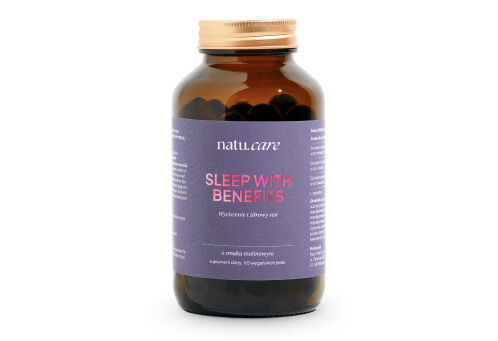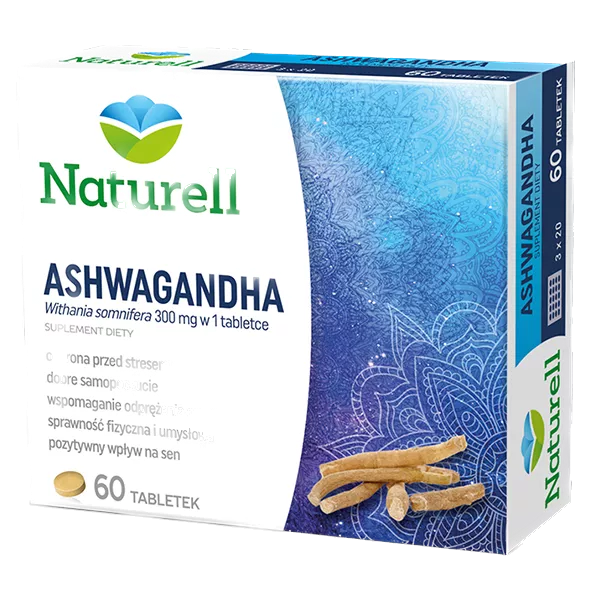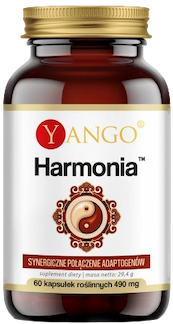Withania somnifera - properties, how it works, what it helps + opinions
Withania somnifera (or ashwagandha) shows beneficial adaptogenic effects on the human body.


Learn more about our editorial process
.

Learn more about our editorial process
.

Learn more about our editorial process
.

Learn more about our editorial process
.
Why you can trust us
Articles on Natu.Care are written based on scientific research, data from government websites and other reliable sources. The texts are written in cooperation with doctors, nutritionists and other health and beauty experts. Articles are reviewed before publication and during significant updates.
.Learn more about our editorial process
.Information about advertisements
Content on Natu.Care may contain links to products from the sale of which we may receive a commission. When creating content, we adhere to high editorial standards and take care to be objective about the products discussed. The presence of affiliate links is not dictated by our partners, and we select the products we review ourselves completely independently.
.Learn more about our terms and Conditions
.For thousands of years, withania somnifera, also known as ashwagandha, has been used by practitioners in Eastern medicine for its support of stress resistance, improved sleep and even improved libido. If you're tempted to check out this exotic plant, find out what it can help you with and how to use it safely.
From this article you will learn:
- What properties withania somnifera exhibits.
- How much and how much it can help you.
- How much and how to use it to feel the effects.
- What the side effects of use may be.
- Who should take it?
- Who should not take withania somnifera.
See also:
- Ashwagandha
- Ashwagandha - dosage
- Ashwagandha - contraindications
- Ashwagandha - side effects
- Ashwagandha - morning or night?
- Ashwagandha - when does it start working?
- Ashwagandha what not to combine with?
- Indian ginseng
- Adaptogens
Withania somnifera - what is this plant?
.
Withania somnifera is the plant also known by the names: ashwagadha, Indian ginseng, and withania somnifera. It is commonly used in Ayurveda - traditional Indian medicine for : stress relief,
among other things.
improve sleep quality, strengthen the body, support health and well-being .
.
It belongs to adaptogens, a group of plants with specific effects on the human body. Adaptogens induce physiological, morphological and biochemical changes in the body, exhibit antioxidant, tonic effects and help restore a state of homeostasis (balance) .
Adaptogens, which also include rhodiola rosea, membranous astragalus or cordiaceps are non-toxic and safe for most people .
.
Active substances
.
The compounds in Withania somnifera that are responsible for its health benefits are :
- alkaloids (e.g. vitanin, somniferin, anaferin),
- vitanolides, or steroidal lactones (e.g. vitanoline a, vitanolides a-y),
- vitanolid glycosides (e.g. sitoindosides, vitanosides),
- flavonoids,
- saponins,
- coumarins, .
Ashwagandha contains the most structurally diverse set of valuable vitanolides of all plants, which translates into its unique effects on the human body.
 .
.
Julia SkrajdaDietitian
.Withania somnifera - properties
.
Sleptomania has adaptogenic properties - it increases resistance to stress and its negative effects, has antioxidant and tonic effects, helps maintain a sense of well-being and supports healthy sleep. It restores balance in the body and is a helpful support in the treatment of certain ailments .
This plant is one of the most studied adaptogens. Many scientific papers have examined its effects on physical and mental health. Results to date suggest that, in some individuals, it can be a helpful support for daily functioning as well as the treatment of many ailments .
withania somnifera can help with :
.
- .
- Stress, anxiety and mental tension. Vitania osprey is known for its anti-anxiety effects, relieving stress and its negative effects on the body. It lowers cortisol (the so-called stress hormone) and supports mental health.
- Sleep disorders. Systematic intake of this plant can improve the quality of sleep, by making it easier to fall asleep, calmer and increasing nighttime rest time.
- Self-esteem. By reducing stress and improving quality of sleep it positively affects mood and motivation.
- Mind fitness. Regular supplementation can improve memory and concentration, positively affecting mental performance.
- Fatigue. Withania somnifera may reduce feelings of fatigue and add energy. This can be linked to improved sleep quality - when you are sleepy, you have more desire to perform.
- Regeneration of the body. Supports post-workout muscle recovery.
- Improves immune function. Supports immune system function.
- Antioxidation of the body. Eliminates harmful free radicals, reduces oxidative stress and reduces the negative consequences of their action.
- Fertility. Increases sperm motility and improves semen quality.
- Hormones. Increases testosterone levels in infertile men. Increases levels of thyroid hormones T3 and T4, so may support treatment of thyroid insufficiency.
- Libido. Ashwagandha may help treat sexual dysfunction in women.
- Cholesterol. Ashwagandha lowers 'bad' LDL cholesterol.
- Pain relief. Reduces pain during chemotherapy and in osteoarthritis.
- Conditioning. Supports the body's performance, especially in athletes doing endurance training, as it increases the aerobic ceiling.
Dosing of Withania somnifera
.
Dosage of Withania somnifera depends on the manufacturer and form of the preparation. However, the most common use is:
- 300 to 500 mg of extract per day for capsules or tablets,
- up to 3 g of powdered root,
- 1 to 2 tablespoons (5 to 7 g) of tea made from the root, .
Various daily portions of Withania somnifera have been used in research studies, with a common regimen being 300 mg of extract twice daily . Adjust the form and dosage to your preference and watch how you feel.
For improved sleep quality, stress reduction and tranquillity, 500 mg per night is recommended, while when it comes to muscle recovery and improved performance a 2 × 300 mg regimen will actually work.
 .
.
Julia SkrajdaDietitian
.If we are concerned about improving fertility in men and sperm quality, regular teas and infusions of the root work best - adds clinical nutritionist.
Is it possible to overdose on Withania somnifera?
.
Yes, it is possible to lead to an overdose. This is usually the result of using too much Withania somnifera, not in accordance with the manufacturer's recommendations. Scientists have used various doses (as high as 5000 mg) and forms (extracts, infusions) of this plant in their studies, but under controlled conditions.
Based on scientific work, it is considered that daily not to exceed 1,000 mg of extract and 3 g of powdered vitania periwinkle root . In using this adaptogen, regularity is key, rather than a high daily dose. You can take 800 mg every few days and you will achieve less benefit than someone using 300 mg but every day for 12 weeks.
Important
Withania somnifera is becoming increasingly popular, so many manufacturers are adding it to multi-ingredient formulations, such as for sleep, stress or vitality, and to so-called functional drinks. Sometimes it's a modest addition, but pay attention to what you're using so you don't unknowingly end up with an excess.
How long can Withania somnifera be used?
.
Withania somnifera can be safely used for up to 12 weeks, followed by a minimum 4-week break. There is no reliable data on chronic intake of this plant, so at this point it is considered "probably safe for humans" when used daily for 3 months .
You may encounter information that taking a break is unnecessary, however, there are no scientific studies that have documented the effects of chronic use of Withania somnifera . Don't be a self-proclaimed 'guinea pig', and for a 4-week break try other adaptogens, such as rhodiola rosea, cordyceps, maca or Chinese citronella.
Contraindications to the use of Withania somnifera
.
Withania somnifera should not be used :
.
- pregnant and breastfeeding women,
- persons under 18 years of age,
- patients with autoimmune diseases, including thyroid disease, multiple sclerosis, type I diabetes, rheumatoid arthritis,
- patients with bleeding disorders, gastric ulcers,
- persons planning surgery, .
Do not take Withania somnifera preparations if you are concurrently using :
- blood-thinning medicines,
- medications used to treat the thyroid gland,
- medications that suppress the immune system,
- medications used to treat depression and anxiety,
- medications for high blood pressure,
- sleep medicines,
- herbal preparations that cause drowsiness (e.g. St. John's wort, valerian, methystine pepper).
- herbal preparations that cause drowsiness.
Consult your doctor if in doubt and you want to try Withania somnifera.
Is Withania somnifera good for children?
.
There are no scientific studies that test what effect consuming ashwagandha has on children. We do not know if or how it affects their development, emotions and behaviour - for this reason, it is not recommended to give adaptogens to children.
Let's not kid ourselves - it is not an essential, irreplaceable plant for various ailments. If your child is restless, has trouble sleeping or is overtired, consult your doctor instead of giving them Withania somnifera.
If your child is restless, has trouble sleeping or is overtired, consult your doctor instead of giving them Withania somnifera.
Withania somnifera - side effects
.
The use of ashwagandha may cause side effects :
- abdominal pain,
- vomiting,
- nausea,
- diarrhoea,
- headache,
- rash,
- bad mood,
- insomnia, insomnia, nightmares,
- thyroid dysfunction, .
To avoid side effects, check for contraindications to use and for interactions between your medication and other dietary supplements you are taking. If in doubt, advise your doctor.
.
How to choose the best withania somnifera product?
.
To choose the best Withania somnifera (ashwagandha) product pay attention to:
- Standardisation. Determines whether there is an active ingredient in a particular herbal product and in what quantity. Withania somnifera supplements should be standardised for vitanolides content. Ideally, there should be a minimum of 2.5% (a maximum of 10% - you won't buy more in Poland).
- DER ( Drug Extract Ratio). Indicates how much plant material was used to produce one part of the extract obtained. E.g. DER 10:1 means that 10 g yielded 1 g of extract. The higher the DER, the stronger the extract.
- Certificates. Trusted producers are happy to boast stamps attesting to good production practices, sustainable cultivation or laboratory testing.
- Convenience. Consider what form will be most convenient - drops, capsules, tablets, infusion. Will you want to make a drink every day? Do you have a problem swallowing tablets? .
Product description
Safe tablets to help you fall asleep and improve the quality of your sleep. They contain only natural ingredients that will calm your body and prepare you for a good night's rest. This way, you will wake up in the morning relaxed and rested.
.Melatonin is a hormone thatós naturally found in the body. Its secretion is linked to the diurnal rhythm and increases after nightfall. Blue light, which we are exposed to while watching TV, sitting at the computer or browsing on the phone, means that the natural synthesis of melatonin can be disrupted.
.This is why it is worthwhile to support the process of falling asleep with a supplement with melatonin, whose action has been supplemented with plant extracts, encapsulated in the CALMOMIX® complex. They will help your body to calm down before falling asleep and maintain uninterrupted, healthy sleep.
Pros and cons
Safe tablets to help you fall asleep and improve the quality of your sleep. They contain only natural ingredients that will calm your body and prepare you for a good night's rest. This way, you will wake up in the morning relaxed and rested.
.Melatonin is a hormone thatós naturally found in the body. Its secretion is linked to the diurnal rhythm and increases after nightfall. Blue light, which we are exposed to while watching TV, sitting at the computer or browsing on the phone, means that the natural synthesis of melatonin can be disrupted.
.This is why it is worthwhile to support the process of falling asleep with a supplement with melatonin, whose action has been supplemented with plant extracts, encapsulated in the CALMOMIX® complex. They will help your body to calm down before falling asleep and maintain uninterrupted, healthy sleep.
Additional information
Safe tablets to help you fall asleep and improve the quality of your sleep. They contain only natural ingredients that will calm your body and prepare you for a good night's rest. This way, you will wake up in the morning relaxed and rested.
.Melatonin is a hormone thatós naturally found in the body. Its secretion is linked to the diurnal rhythm and increases after nightfall. Blue light, which we are exposed to while watching TV, sitting at the computer or browsing on the phone, means that the natural synthesis of melatonin can be disrupted.
.This is why it is worthwhile to support the process of falling asleep with a supplement with melatonin, whose action has been supplemented with plant extracts, encapsulated in the CALMOMIX® complex. They will help your body to calm down before falling asleep and maintain uninterrupted, healthy sleep.
User review
Safe tablets to help you fall asleep and improve the quality of your sleep. They contain only natural ingredients that will calm your body and prepare you for a good night's rest. This way, you will wake up in the morning relaxed and rested.
.Melatonin is a hormone thatós naturally found in the body. Its secretion is linked to the diurnal rhythm and increases after nightfall. Blue light, which we are exposed to while watching TV, sitting at the computer or browsing on the phone, means that the natural synthesis of melatonin can be disrupted.
.This is why it is worthwhile to support the process of falling asleep with a supplement with melatonin, whose action has been supplemented with plant extracts, encapsulated in the CALMOMIX® complex. They will help your body to calm down before falling asleep and maintain uninterrupted, healthy sleep.
Ashwagandha Naturell
Product description
Extract from ashwagandha leaves and root will boost energy, overcome fatigue, improve memory and concentration. The product is recommended during periods of increased physical tension or intense physical activity.
Pros and cons
Extract from ashwagandha leaves and root will boost energy, overcome fatigue, improve memory and concentration. The product is recommended during periods of increased physical tension or intense physical activity.
Additional information
Extract from ashwagandha leaves and root will boost energy, overcome fatigue, improve memory and concentration. The product is recommended during periods of increased physical tension or intense physical activity.
Dr. Jacob's Strong Nerves
Product description
Dr. Jacob's Strong Nerves is a dietary supplement thatóry supports the nervous system and helps the body to cope with stress. Thanks to the synergistic combination of beneficial ingredientsós, Strong Nerves relieves anxiety symptoms, increases mental and physical stamina, and supports concentration.
The benefits of this supplement are particularly important for peopleóly exposed to chronic stress, those with sleep problems or employeesóly. It is worth mentioning that the supplement can also help to improve mental well-being and support the immune system.
.All this makes Dr. Jacob's Strong Nerves an excellent remedy for anyone looking for comprehensive support for their nervous system and overall mental performance.
Pros and cons
Dr. Jacob's Strong Nerves is a dietary supplement thatóry supports the nervous system and helps the body to cope with stress. Thanks to the synergistic combination of beneficial ingredientsós, Strong Nerves relieves anxiety symptoms, increases mental and physical stamina, and supports concentration.
The benefits of this supplement are particularly important for peopleóly exposed to chronic stress, those with sleep problems or employeesóly. It is worth mentioning that the supplement can also help to improve mental well-being and support the immune system.
.All this makes Dr. Jacob's Strong Nerves an excellent remedy for anyone looking for comprehensive support for their nervous system and overall mental performance.
Additional information
Dr. Jacob's Strong Nerves is a dietary supplement thatóry supports the nervous system and helps the body to cope with stress. Thanks to the synergistic combination of beneficial ingredientsós, Strong Nerves relieves anxiety symptoms, increases mental and physical stamina, and supports concentration.
The benefits of this supplement are particularly important for peopleóly exposed to chronic stress, those with sleep problems or employeesóly. It is worth mentioning that the supplement can also help to improve mental well-being and support the immune system.
.All this makes Dr. Jacob's Strong Nerves an excellent remedy for anyone looking for comprehensive support for their nervous system and overall mental performance.
Solve Labs Brain Tech Memory & Focus, adaptogens, capsules

- Composition: bacopa monieri, gotu kola, rhoiola rosea, ginseng, zinc gluconate, choline, vitamin B6
- Form: capsules .
- Packaging: 30 or 60 capsules .
- Dose: 2 capsules daily .
- Sufficient for: 10 or 20 days .
Product description
Adaptogens, vitamins and minerals to support the mózg and nervous system. Brain Tech has been developed for people needing long-lasting concentration, improved learning ability, memory and increased resistance to stress.
Pros and cons
Adaptogens, vitamins and minerals to support the mózg and nervous system. Brain Tech has been developed for people needing long-lasting concentration, improved learning ability, memory and increased resistance to stress.
Additional information
Adaptogens, vitamins and minerals to support the mózg and nervous system. Brain Tech has been developed for people needing long-lasting concentration, improved learning ability, memory and increased resistance to stress.
Adaptogens, vitamins and minerals to support the mózg and nervous system. Brain Tech has been developed for people needing long-lasting concentration, improved learning ability, memory and increased resistance to stress.
YANGO, Harmony, adaptogens, capsules
Product description
This dietary supplement contains a synergistic combination of 5 plant extracts that positively influence the body's homeostasis and well-being. The product is recommended for people living under stress, tension and those who are physically active.
Pros and cons
This dietary supplement contains a synergistic combination of 5 plant extracts that positively influence the body's homeostasis and well-being. The product is recommended for people living under stress, tension and those who are physically active.
Additional information
This dietary supplement contains a synergistic combination of 5 plant extracts that positively influence the body's homeostasis and well-being. The product is recommended for people living under stress, tension and those who are physically active.
Who can withania somnifera help?
.
The use of Withania somnifera is recommended for everyone:
.
- .
- experiencing stress, tension, anxiety,
- fatigued,
- with moderate sleep problems,
- wanting to improve memory and concentration,
- physically active,
- women experiencing sexual dysfunction or menopause,
- men with libido and fertility problems,
- who want to feel a natural surge of energy and add vitality, .
Famous moon milk
.
In Indian medicine, to achieve harmony of body, soul and mind, a nutritious diet and good sleep are fundamental. A recommended drink that is beneficial for a good night's rest is moon milk. Will you try it?

Ingredients for 1 serving:
.
- milk or vegetable drink - 200 g
- natural honey - 1 tbsp (approx. 20 g)
- ashwagandha root powder - incomplete teaspoon (up to 3 g)
- nutmeg - 1 pinch
- ground cinnamon - 1 pinch
- curcuma - 1 pinch .
Making:
- Heat the milk or vegetable drink over a low heat.
- Add to the warm milk or vegetable drink.
- Add all the ingredients except the honey to the warm liquid.
- Stir the ingredients well, preferably with a whisk.
- Add the honey, but do not boil the liquid.
- Decorate or add other ingredients as desired, e.g. dried flowers, fruit. .
See also:
- Cordyceps
- Chaga
- Passionflower
- Lion's Mane
- Reishi
- Hogweed
- Berberine
- Curcuma
- Piperine
- Wild rose
- Black cumin oil
Analysis of dietary supplements:
- Ashwagandha SFD
- Ashwagandha Aliness
- Ashwagandha Naturell
- Solgar's Ashwagandha
- Ashwagandha Swanson
- Swanson Berberine
- Potency pills
- Sedation pills
Summary
.
- Withania somnifera is an adaptogenic plant used in Eastern medicine - Ayurveda. It is better known by the names ashwagandha and ashwagandha and withania somnifera.
- Thanks to the bioactive compounds it contains (including vitanolides), it has an adaptogenic effect, i.e. it supports the body in coping with stress and restoring physical and mental balance.
- Vitanolid improves mood, proper sleep, helps with stress, anxiety and tension, influences testosterone and thyroid hormone levels, supports male fertility, libido, helps with recovery and improves fitness.
- The main contraindications to its use are age under 18, pregnancy, lactation, use of specific category drugs and certain diseases.
- The usual use of this plant is 300-500 mg of extract or 3 g of Withania somnifera powder per day.
- The use of this plant is safe for 3 months, then it is recommended to take a break. .
FAQ
.How does Withania somnifera work?
Withania somnifera acts adaptogenically in that it increases the body's resistance to stress and negative environmental factors through the bioactive substances it contains (mainly vitanolides). It acts antioxidant, tonic, supports healthy sleep and improves mood.
This adaptogen supports sexual health, improves male fertility, reduces the severity of some menopausal symptoms, and is a useful addition to the diet of performance athletes as well as those weight training.
How to pronounce and spell ashwagandha correctly?
On the internet you will find many incorrect (as well as funny) spellings of this plant, e.g.: ashpaganda, asheaganda, ashfaganda, ashwafanda. The correct spelling is ashwagandha, and is pronounced ash-wa-gan-duh.
How to use withania somnifera.
To feel the benefits of consuming this adaptogen, take a high-quality extract with a minimum of 2.5% vitanolides and use it daily for 8-12 weeks. You can feel the first effects of use even after 4 weeks.
Does ashwagandha make you sleepy?
No, ashwagandha (Withania somnifera) does not have a sleep-inducing effect because it does not have an ad hoc effect (the effects are visible after 4-8 weeks of daily use) and it does not contain substances that would affect sleepiness (therefore it can be used at any time of the day). Ashwagandha, after prolonged use, supports falling asleep and may improve sleep quality.
Is ashwagandha safe?
Yes, ashwagandha (Withania somnifera) is safe - it is one of the best studied adaptogens that is well tolerated by most people and rarely causes side effects. Typically, ashwagandha harms people who use excessive amounts of it.
Vegetable ashwagandha - where to buy?
You can buy Withania somnifera (ashwagandha) stationary, e.g. in good herbal shops, health food shops, pharmacies and online. When shopping, check the quality of the product - a good ashwagandha preparation should contain a standardised percentage of vitanolides.
How many tablets of ashwagandha per day?
How many tablets (capsules, powder) of ashwagandha to take per day depends on the specific manufacturer, so always take it as it is written on the packaging. Preparations with this adaptogen have different forms and daily portions.
Does withania somnifera work?
Yes, Withania somnifera has antioxidant and tonic effects, supports mental function, healthy sleep, reduces fatigue and reduces the negative effects of stress on mental and physical health. In addition, it has beneficial effects on male fertility, libido and reduces sexual dysfunction in women.
.
Sources
.See all
A prospective, randomized double-blind, placebo-controlled study of safety and efficacy of a high-concentration full-spectrum extract of ashwagandha root in reducing stress and anxiety in adults-PubMed. (n.d.). Retrieved November 25, 2023, from https://pubmed.ncbi.nlm.nih.gov/23439798/
Abdelwahed, M. T., Hegazy, M. A., & Mohamed, E. H. (2023). Major biochemical constituents of Withania somnifera (ashwagandha) extract: A review of chemical analysis. Reviews in Analytical Chemistry, 42(1). https://doi.org/10.1515/revac-2022-0055
Ahmad, M. K., Mahdi, A. A., Shukla, K. K., Islam, N., Rajender, S., Madhukar, D., Shankhwar, S. N., & Ahmad, S. (2010). Withania somnifera improves semen quality by regulating reproductive hormone levels and oxidative stress in seminal plasma of infertile males. Fertility and Sterility, 94(3), 989-996. https://doi.org/10.1016/j.fertnstert.2009.04.046
Ahmed, W., Mofed, D., Zekri, A.-R., El-Sayed, N., Rahouma, M., & Sabet, S. (2018). Antioxidant activity and apoptotic induction as mechanisms of action of Withania somnifera (Ashwagandha) against a hepatocellular carcinoma cell line. The Journal of International Medical Research, 46(4), 1358-1369. https://doi.org/10.1177/0300060517752022
Ajgaonkar, A., Jain, M., & Debnath, K. (n.d.). Efficacy and Safety of Ashwagandha (Withania somnifera) Root Extract for Improvement of Sexual Health in Healthy Women: A Prospective, Randomized, Placebo-Controlled Study. Cureus, 14(10), e30787. https://doi.org/10.7759/cureus.30787
Ambiye, V. R., Langade, D., Dongre, S., Aptikar, P., Kulkarni, M., & Dongre, A. (2013). Clinical Evaluation of the Spermatogenic Activity of the Root Extract of Ashwagandha (Withania somnifera) in Oligospermic Males: A Pilot Study. Evidence-Based Complementary and Alternative Medicine: eCAM, 2013, 571420. https://doi.org/10.1155/2013/571420
Anwer, T., Sharma, M., Pillai, K. K., & Iqbal, M. (2008). Effect of Withania somnifera on insulin sensitivity in non-insulin-dependent diabetes mellitus rats. Basic & Clinical Pharmacology & Toxicology, 102(6), 498-503. https://doi.org/10.1111/j.1742-7843.2008.00223.x
Ashwagandha. (2012). In LiverTox: Clinical and Research Information on Drug-Induced Liver Injury. National Institute of Diabetes and Digestive and Kidney Diseases. http://www.ncbi.nlm.nih.gov/books/NBK548536/
Björnsson, H. K., Björnsson, E. S., Avula, B., Khan, I. A., Jonasson, J. G., Ghabril, M., Hayashi, P. H., & Navarro, V. (2020). Ashwagandha-induced liver injury: A case series from Iceland and the US Drug-Induced Liver Injury Network. Liver International, 40(4), 825-829. https://doi.org/10.1111/liv.14393
Chandrasekhar, K., Kapoor, J., & Anishetty, S. (2012). A Prospective, Randomized Double-Blind, Placebo-Controlled Study of Safety and Efficacy of a High-Concentration Full-Spectrum Extract of Ashwagandha Root in Reducing Stress and Anxiety in Adults. Indian Journal of Psychological Medicine, 34(3), 255-262. https://doi.org/10.4103/0253-7176.106022
Chauhan, S., Srivastava, M. K., & Pathak, A. K. (2022). Effect of standardized root extract of ashwagandha (Withania somnifera) on well-being and sexual performance in adult males: A randomized controlled trial. Health Science Reports, 5(4), e741. https://doi.org/10.1002/hsr2.741
Cheah, K. L., Norhayati, M. N., Husniati Yaacob, L., & Abdul Rahman, R. (2021). Effect of Ashwagandha (Withania somnifera) extract on sleep: A systematic review and meta-analysis. PloS One, 16(9), e0257843. https://doi.org/10.1371/journal.pone.0257843
Choudhary, B., Shetty, A., & Langade, D. G. (2015). Efficacy of Ashwagandha (Withania somnifera [L.] Dunal) in improving cardiorespiratory endurance in healthy athletic adults. Ayu, 36(1), 63-68. https://doi.org/10.4103/0974-8520.169002
Choudhary, D., Bhattacharyya, S., & Joshi, K. (2017). Body Weight Management in Adults Under Chronic Stress Through Treatment With Ashwagandha Root Extract. Journal of Evidence-based Complementary & Alternative Medicine, 22(1), 96-106. https://doi.org/10.1177/2156587216641830
Cooley, K., Szczurko, O., Perri, D., Mills, E. J., Bernhardt, B., Zhou, Q., & Seely, D. (2009). Naturopathic Care for Anxiety: A Randomized Controlled Trial ISRCTN78958974. PLOS ONE, 4(8), e6628. https://doi.org/10.1371/journal.pone.0006628
Dhama, P., Ding, X., & Sharma, A. (2023). Exploring phytochemicals of Withania somnifera from different vicinities for functional foods. Journal of Future Foods, 3(3), 278-287. https://doi.org/10.1016/j.jfutfo.2023.02.010
Dongre, S., Langade, D., & Bhattacharyya, S. (2015a). Efficacy and Safety of Ashwagandha (Withania somnifera) Root Extract in Improving Sexual Function in Women: A Pilot Study. BioMed Research International, 2015, e284154. https://doi.org/10.1155/2015/284154
Dongre, S., Langade, D., & Bhattacharyya, S. (2015b). Efficacy and Safety of Ashwagandha (Withania somnifera) Root Extract in Improving Sexual Function in Women: A Pilot Study. BioMed Research International, 2015, 284154. https://doi.org/10.1155/2015/284154
Efficacy and safety of standardized Ashwagandha (Withania somnifera) root extract on reducing stress and anxiety in domestic dogs: A randomized controlled trial-ScienceDirect. (n.d.). Retrieved November 17, 2023, from https://www.sciencedirect.com/science/article/abs/pii/S1558787822000326
Efficacy of Ashwagandha (Withania somnifera [L.] Dunal) in improving cardiorespiratory endurance in healthy athletic adults-PubMed. (n.d.). Retrieved November 25, 2023, from https://pubmed.ncbi.nlm.nih.gov/26730141/
Jędruszczak, P., Zdun, S., Walczak, K., Wesołowska, Z., & Gaweł, W. (2023). Ashwagandha (Withania somnifera) - influence on sleep: Review. Quality in Sport, 9(1), Article 1. https://doi.org/10.12775/QS.2023.09.01.005
Kamal, H. I., Patel, K., Brdak, A., Heffernan, J., & Ahmad, N. (n.d.). Ashwagandha as a Unique Cause of Thyrotoxicosis Presenting With Supraventricular Tachycardia. Cureus, 14(3), e23494. https://doi.org/10.7759/cureus.23494
Kumar, A., & Kalonia, H. (2008). Effect of Withania somnifera on Sleep-Wake Cycle in Sleep-Disturbed Rats: Possible GABAergic Mechanism. Indian Journal of Pharmaceutical Sciences, 70(6), 806-810. https://doi.org/10.4103/0250-474X.49130
Kumar, R., Gupta, K., Saharia, K., Pradhan, D., & Subramaniam, J. R. (2013). Withania somnifera root extract extends lifespan of Caenorhabditis elegans. Annals of Neurosciences, 20(1), 13-16. https://doi.org/10.5214/ans.0972.7531.200106
Langade, D., Kanchi, S., Salve, J., Debnath, K., & Ambegaokar, D. (n.d.). Efficacy and Safety of Ashwagandha (Withania somnifera) Root Extract in Insomnia and Anxiety: A Double-blind, Randomized, Placebo-controlled Study. Cureus, 11(9), e5797. https://doi.org/10.7759/cureus.5797
Langade, D., Thakare, V., Kanchi, S., & Kelgane, S. (2021). Clinical evaluation of the pharmacological impact of ashwagandha root extract on sleep in healthy volunteers and insomnia patients: A double-blind, randomized, parallel-group, placebo-controlled study. Journal of Ethnopharmacology, 264, 113276. https://doi.org/10.1016/j.jep.2020.113276
Lopresti, A. L., Drummond, P. D., & Smith, S. J. (2019). A Randomized, Double-Blind, Placebo-Controlled, Crossover Study Examining the Hormonal and Vitality Effects of Ashwagandha (Withania somnifera) in Aging, Overweight Males. American Journal of Men's Health, 13(2), 1557988319835985. https://doi.org/10.1177/1557988319835985
Lopresti, A. L., Smith, S. J., & Drummond, P. D. (2022). Modulation of the hypothalamic-pituitary-adrenal (HPA) axis by plants and phytonutrients: A systematic review of human trials. Nutritional Neuroscience, 25(8), 1704-1730. https://doi.org/10.1080/1028415X.2021.1892253
Lopresti, A. L., Smith, S. J., Malvi, H., & Kodgule, R. (2019). An investigation into the stress-relieving and pharmacological actions of an ashwagandha (Withania somnifera) extract: A randomized, double-blind, placebo-controlled study. Medicine, 98(37), e17186. https://doi.org/10.1097/MD.0000000000017186
Lubarska, M., Halasinski, P., Hryhorowicz, S., Mahadea, D. S., Łykowska-Szuber, L., Eder, P., Dobrowolska, A., & Krela-Kaźmierczak, I. (2023). Liver Dangers of Herbal Products: A Case Report of Ashwagandha-Induced Liver Injury. International Journal of Environmental Research and Public Health, 20(5), 3921. https://doi.org/10.3390/ijerph20053921
Mh, M., E, M., M, B., Rm, C., & J, P. (2009). Steroidal lactones from Withania somnifera, an ancient plant for novel medicine. Molecules (Basel, Switzerland), 14(7). https://doi.org/10.3390/molecules14072373
Mikulska, P., Malinowska, M., Ignacyk, M., Szustowski, P., Nowak, J., Pesta, K., Szeląg, M., Szklanny, D., Judasz, E., Kaczmarek, G., Ejiohuo, O. P., Paczkowska-Walendowska, M., Gościniak, A., & Cielecka-Piontek, J. (2023). Ashwagandha (Withania somnifera)-Current Research on the Health-Promoting Activities: A Narrative Review. Pharmaceutics, 15(4), 1057. https://doi.org/10.3390/pharmaceutics15041057
Murray, M. (2022). Ashwagandha Research Analysis. https://examine.com/supplements/ashwagandha/
Nasimi Doost Azgomi, R., Zomorrodi, A., Nazemyieh, H., Fazljou, S. M. B., Sadeghi Bazargani, H., Nejatbakhsh, F., Moini Jazani, A., & Ahmadi AsrBadr, Y. (2018). Effects of Withania somnifera on Reproductive System: A Systematic Review of the Available Evidence. BioMed Research International, 2018, e4076430. https://doi.org/10.1155/2018/4076430
Panda, S., & Kar, A. (1998). Changes in thyroid hormone concentrations after administration of ashwagandha root extract to adult male mice. The Journal of Pharmacy and Pharmacology, 50(9), 1065-1068. https://doi.org/10.1111/j.2042-7158.1998.tb06923.x
Pingali, U., Pilli, R., Fatima, N., & Fatima, N. (2014). Effect of Standardized Aqueous Extract of Withania Somniferaon Tests of Cognitive and Psychomotor Performance in Healthy Human Participants. Pharmacognosy Research, 6(1), 12-18. https://doi.org/10.4103/0974-8490.122912
Priyanka, G., Anil Kumar, B., Lakshman, M., Manvitha, V., & Kala Kumar, B. (2020). Adaptogenic and Immunomodulatory Activity of Ashwagandha Root Extract: An Experimental Study in an Equine Model. Frontiers in Veterinary Science, 7, 541112. https://doi.org/10.3389/fvets.2020.541112
Remenapp, A., Coyle, K., Orange, T., Lynch, T., Hooper, D., Hooper, S., Conway, K., & Hausenblas, H. A. (2022). Efficacy of Withania somnifera supplementation on adult's cognition and mood. Journal of Ayurveda and Integrative Medicine, 13(2), 100510. https://doi.org/10.1016/j.jaim.2021.08.003
Sahin, K., Orhan, C., Akdemir, F., Tuzcu, M., Gencoglu, H., Sahin, N., Turk, G., Yilmaz, I., Ozercan, I. H., & Juturu, V. (2016). Comparative evaluation of the sexual functions and NF-κB and Nrf2 pathways of some aphrodisiac herbal extracts in male rats. BMC Complementary and Alternative Medicine, 16(1), 318. https://doi.org/10.1186/s12906-016-1303-x
Salve, J., Pate, S., Debnath, K., Langade, D., Salve, J., Pate, S., Debnath, K., & Langade, D. G. (2019). Adaptogenic and Anxiolytic Effects of Ashwagandha Root Extract in Healthy Adults: A Double-blind, Randomized, Placebo-controlled Clinical Study. Cureus, 11(12). https://doi.org/10.7759/cureus.6466
Sarris, J. (2018). Herbal medicines in the treatment of psychiatric disorders: 10-year updated review. Phytotherapy Research, 32(7), 1147-1162. https://doi.org/10.1002/ptr.6055
Sharma, A. K., Basu, I., & Singh, S. (2018). Efficacy and Safety of Ashwagandha Root Extract in Subclinical Hypothyroid Patients: A Double-Blind, Randomized Placebo-Controlled Trial. The Journal of Alternative and Complementary Medicine, 24(3), 243-248. https://doi.org/10.1089/acm.2017.0183
Singh, N., Bhalla, M., Jager, P. de, & Gilca, M. (2011). An Overview on Ashwagandha: A Rasayana (Rejuvenator) of Ayurveda. African Journal of Traditional, Complementary and Alternative Medicines, 8(5S), Article 5S. https://doi.org/10.4314/ajtcam.v8i5S.9
Singh, R. H., Narsimhamurthy, K., & Singh, G. (2008). Neuronutrient impact of Ayurvedic Rasayana therapy in brain aging. Biogerontology, 9(6), 369-374. https://doi.org/10.1007/s10522-008-9185-z
Srivastava, A. N., Ahmad, R., & Khan, M. A. (2016). Evaluation and Comparison of the In Vitro Cytotoxic Activity of Withania somnifera Methanolic and Ethanolic Extracts against MDA-MB-231 and Vero Cell Lines. Scientia Pharmaceutica, 84(1), Article 1. https://doi.org/10.3797/scipharm.1507-13
Tandon, N., & Yadav, S. S. (2020). Safety and clinical effectiveness of Withania Somnifera (Linn.) Dunal root in human ailments. Journal of Ethnopharmacology, 255, 112768. https://doi.org/10.1016/j.jep.2020.112768
Tharakan, A., Shukla, H., Benny, I. R., Tharakan, M., George, L., & Koshy, S. (2021). Immunomodulatory Effect of Withania somnifera (Ashwagandha) Extract-A Randomized, Double-Blind, Placebo Controlled Trial with an Open Label Extension on Healthy Participants. Journal of Clinical Medicine, 10(16), 3644. https://doi.org/10.3390/jcm10163644
Tiwari, S., Gupta, S. K., & Pathak, A. K. (2021). A double-blind, randomized, placebo-controlled trial on the effect of Ashwagandha (Withania somnifera dunal.) root extract in improving cardiorespiratory endurance and recovery in healthy athletic adults. Journal of Ethnopharmacology, 272, 113929. https://doi.org/10.1016/j.jep.2021.113929
Udayakumar, R., Kasthurirengan, S., Mariashibu, T. S., Rajesh, M., Anbazhagan, V. R., Kim, S. C., Ganapathi, A., & Choi, C. W. (2009). Hypoglycaemic and Hypolipidaemic Effects of Withania somnifera Root and Leaf Extracts on Alloxan-Induced Diabetic Rats. International Journal of Molecular Sciences, 10(5), 2367-2382. https://doi.org/10.3390/ijms10052367
Ven Murthy, M. R., Ranjekar, P. K., Ramassamy, C., & Deshpande, M. (2010). Scientific basis for the use of Indian ayurvedic medicinal plants in the treatment of neurodegenerative disorders: Ashwagandha. Central Nervous System Agents in Medicinal Chemistry, 10(3), 238-246. https://doi.org/10.2174/1871524911006030238
Verma, N., Gupta, S. K., Tiwari, S., & Mishra, A. K. (2021). Safety of Ashwagandha Root Extract: A Randomized, Placebo-Controlled, study in Healthy Volunteers. Complementary Therapies in Medicine, 57, 102642. https://doi.org/10.1016/j.ctim.2020.102642
Wang, J., Zhang, H., Kaul, A., Li, K., Priyandoko, D., Kaul, S. C., & Wadhwa, R. (2021). Effect of Ashwagandha Withanolides on Muscle Cell Differentiation. Biomolecules, 11(10), 1454. https://doi.org/10.3390/biom11101454
Wankhede, S., Langade, D., Joshi, K., Sinha, S. R., & Bhattacharyya, S. (2015). Examining the effect of Withania somnifera supplementation on muscle strength and recovery: A randomised controlled trial. Journal of the International Society of Sports Nutrition, 12(1), 43. https://doi.org/10.1186/s12970-015-0104-9
Wei, Z., Li, T., Kuang, H., Su, H., & Wang, Q. (2020). Pharmacological Effects of Withanolides. Biomedical Journal of Scientific & Technical Research, 25(3), 19243-19248. https://doi.org/10.26717/BJSTR.2020.25.004218
White, P. T., Subramanian, C., Motiwala, H. F., & Cohen, M. S. (2016). Natural Withanolides in the Treatment of Chronic Diseases. Anti-inflammatory Nutraceuticals and Chronic Diseases, 928, 329-373. https://doi.org/10.1007/978-3-319-41334-1_14
Wongtrakul, J., Thongtan, T., Kumrapich, B., Saisawang, C., & Ketterman, A. J. (2021). Neuroprotective effects of Withania somnifera in the SH-SY5Y Parkinson cell model. Heliyon, 7(10), e08172. https://doi.org/10.1016/j.heliyon.2021.e08172
Dietary Supplements Team-Government Sanitary Inspectorate-Gov.co.uk portal. (n.d.). Chief Sanitary Inspectorate. Downloaded 25 March 2023, from https://www.gov.pl/web/gis/zespol-do-spraw-suplementow-diety
Ziegenfuss, T. N., Kedia, A. W., Sandrock, J. E., Raub, B. J., Kerksick, C. M., & Lopez, H. L. (2018). Effects of an Aqueous Extract of Withania somnifera on Strength Training Adaptations and Recovery: The STAR Trial. Nutrients, 10(11), Article 11. https://doi.org/10.3390/nu10111807
.
Editorials
Meet the team


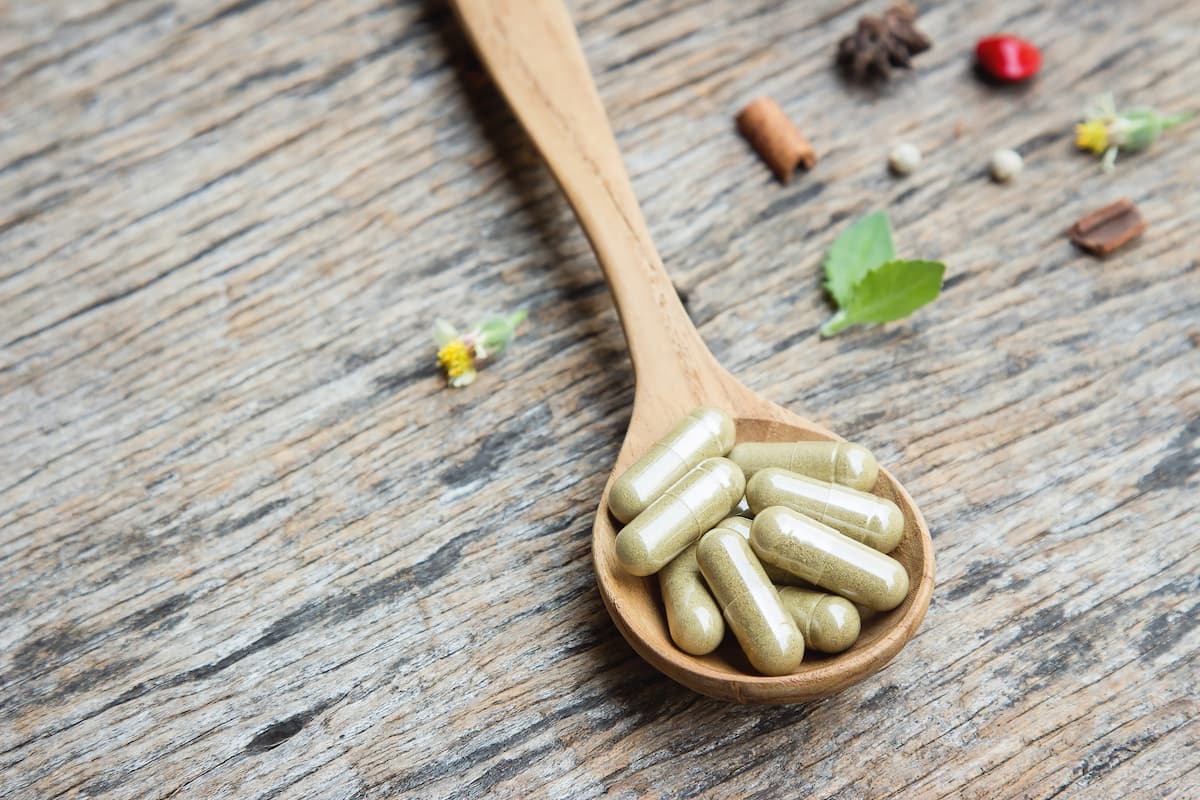
Ashwagandha affects thyroid hormone levels. Find out if you can use it.
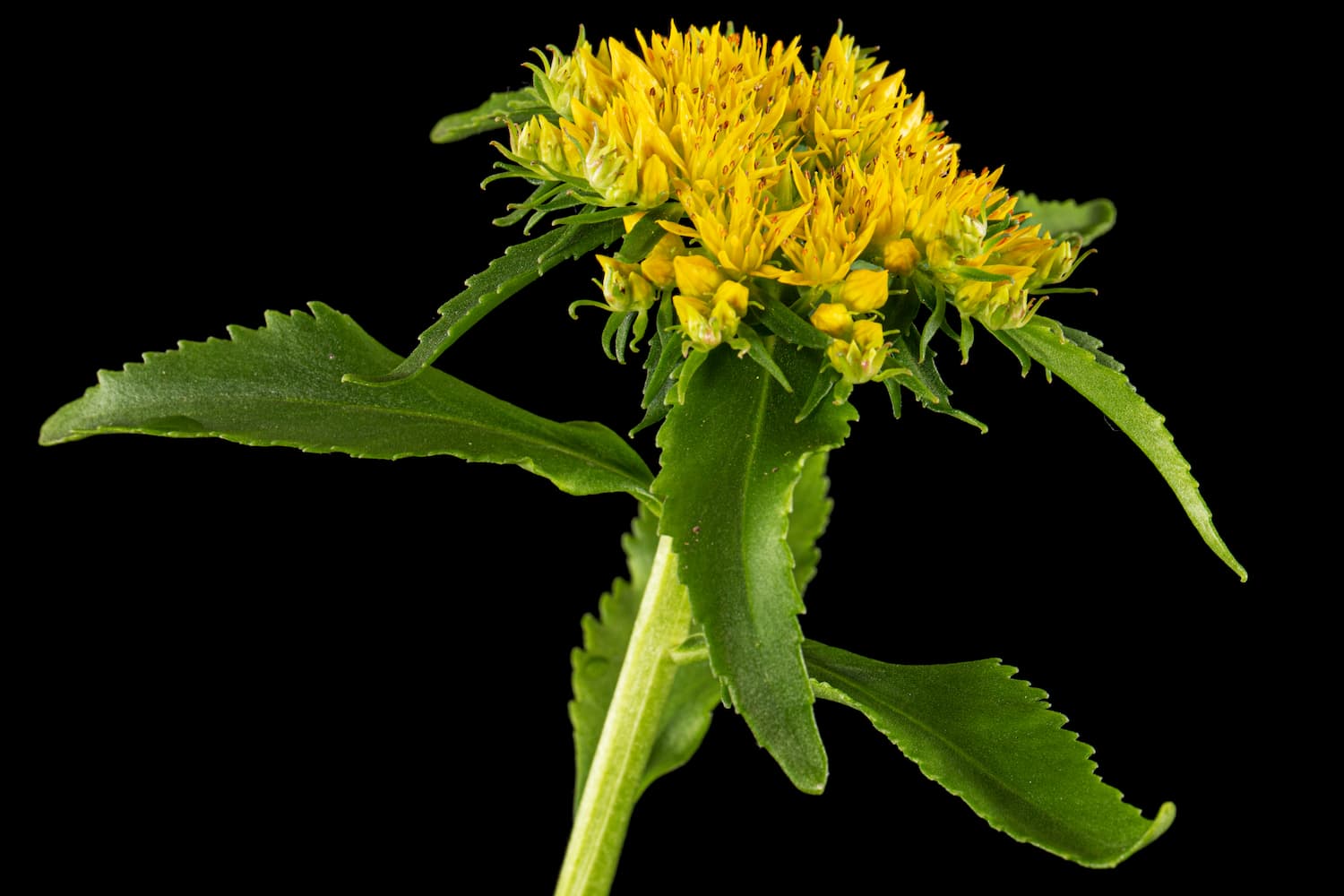
See how mountain pintail can affect your wellbeing.

Check out the opinions of doctors and other professionals about ashwagandha. Also find out what people on the forum think about it.
